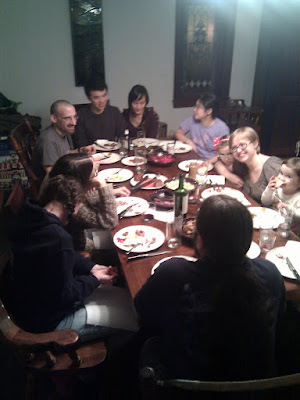End of term issues combined with the Academy of Software Engineering announcement has pretty much eaten up all of my out of class time.
It's going to be a week or so before I can finish writing the posts I was planning on, but it looks like a storm is brewing around Stuyvesant and Computer Science so I thought I'd put up this short semi-related post.
Stuyvesant has a reputation of being something of a pressure cooker. The day can be as long as ten periods and it's not uncommon for a student to take three or more AP classes, even before the senior year. The question of student workload and stress has been a hot topic for a number of years.
There's frequently tension over how many courses and which courses a student should be allowed to take. Usually, this revolves around the school placing a limit on the number of classes, or more specifically, the number of A.P. classes a student can take. Most recently, the conversation looks to be turning to the number of classes a student can take overall.
Given that most A.P. classes fall within a Stuyvesant student's required sequence of classes - that is, Calculus is just "the next math class" and A.P. U.S. History is slotted in place of a students regular U.S. History course, limiting the number of classes a student can take, A.P. or otherwise could have a major impact on Computer Science at Stuyvesant.
What's most disturbing is that limiting student options in terms of courses may not do anything to decrease stress and workload. No one has looked at what is actually going on in student's required classes.
I decided to collect some information from our students. I sent out a survey to five of our seven A.P. C.S. classes (three of mine, two of JonAlf's -- the other two classes don't have a mailing list). I asked them to rate the work load and stress factor for A.P. CS, their typical Stuy course and their typical Stuy A.P.course. So far, I've gotten 80 responses (out of about 150 students emailed). Here's what we got (ratings were on a 1-10 scale):
| A.P. C.S. | Reg. Class | A.P. Class | |
|---|---|---|---|
| Workload avgs | 4.97 | 6.65 | 7.13 |
| Workload dev | 1.94 | 1.41 | 1.52 |
| Stress avgs | 4.67 | 6.39 | 6.94 |
| Stress dev | 2.24 | 1.63 | 1.64 |
I know this isn't really hard data, but it seems that our A.P. C.S. classes are considered to be both easier and less stressful than other classes at Stuyvesant. Given that our kids do very well at C.S., we're probably doing something right and it will be a shame if student opportunities become limited. I'll certainly write more on this as the situation develops.
For you educators out there, is stress an issue at your schools and how do you deal with making room for students to take CS at your schools?


